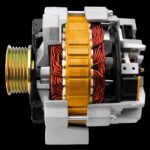Considering getting your ears pierced? You’re not alone. Ear piercing is a popular form of self-expression, and at HOW.EDU.VN, we’re here to guide you through the process. Understanding the costs involved, from the initial piercing to aftercare, is essential for a safe and satisfying experience. This article breaks down the average ear piercing cost, different types of ear piercings, and factors that influence pricing. We’ll also discuss how to choose a reputable piercing studio, ensuring you get the best service and minimize the risk of complications. Learn about the nuances of earlobe piercing prices, cartilage piercing costs, and the investment in quality aftercare.
1. What Are the Average Costs of Ear Piercings in the US?
The average ear piercing cost in the US typically ranges from $28 to $150 for standard earlobe piercings, but the final price varies depending on the type of piercing, studio, and jewelry chosen. For example, cartilage piercings are often more expensive due to the increased skill and precision required.
Let’s examine the average prices for various types of ear piercings:
| Type of Ear Piercing | Average Cost |
|---|---|
| Earlobe (Single) | $28 to $82 |
| Earlobe (Pair) | $55 to $150 |
| Cartilage | $40 to $95 |
| Conch | $62 to $115 |
| Daith | $65 to $125 |
| Helix | $42 to $92 |
| Forward Helix | $50 to $105 |
| Industrial | $72 to $110 |
| Orbital | $45 to $95 |
| Rook | $62 to $112 |
| Snug | $68 to $120 |
| Tragus | $62 to $105 |

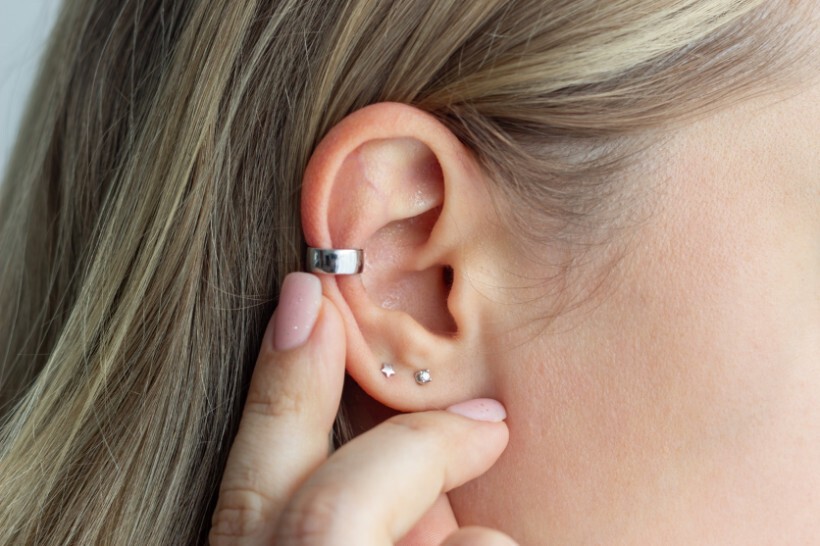
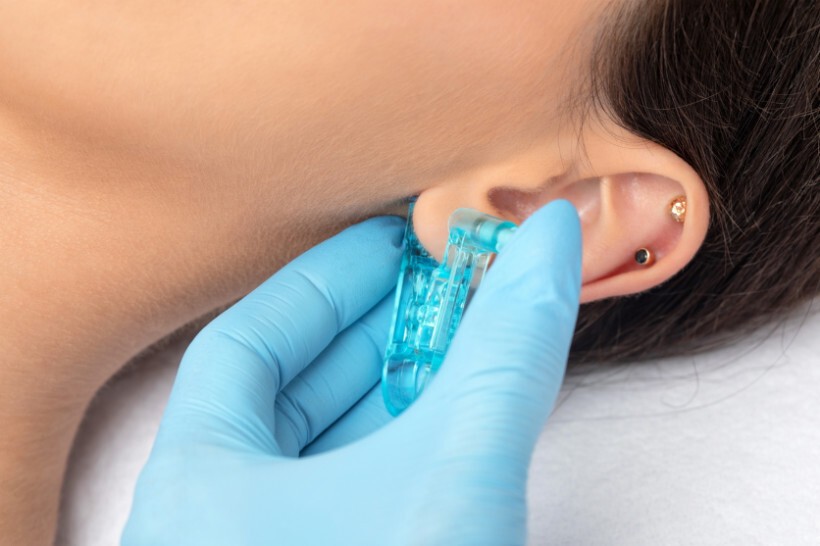
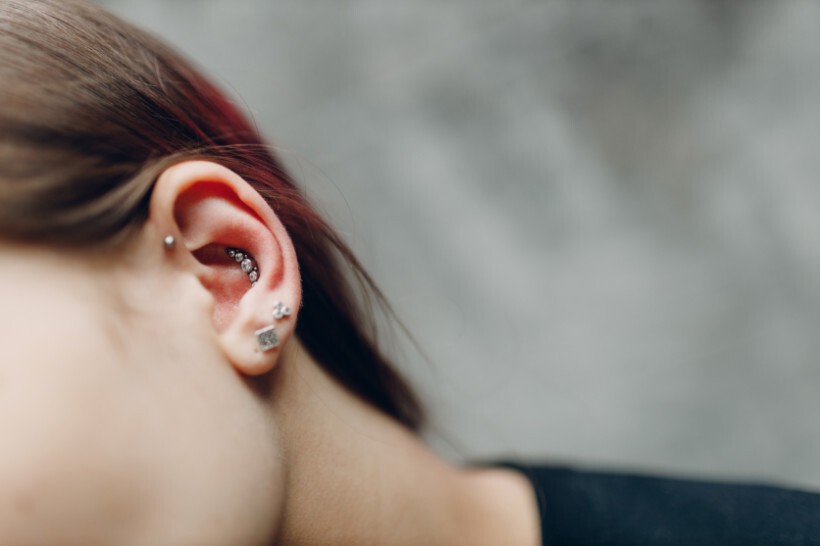
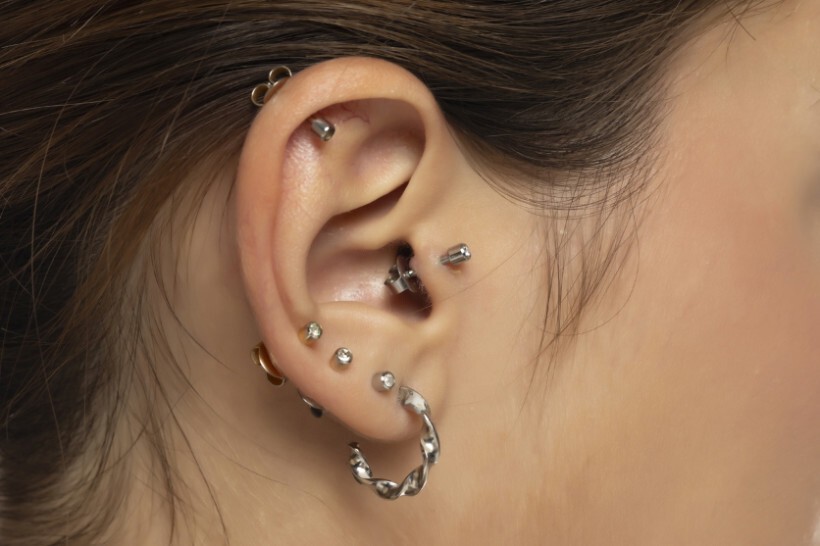

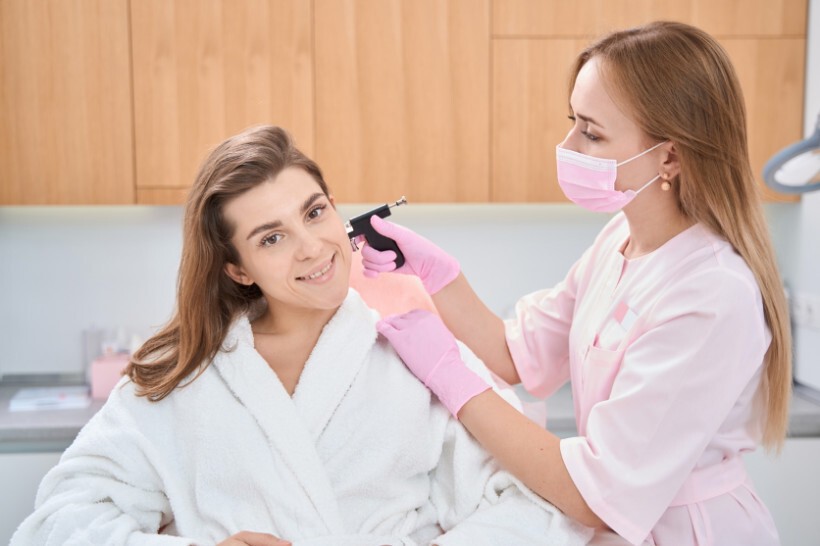
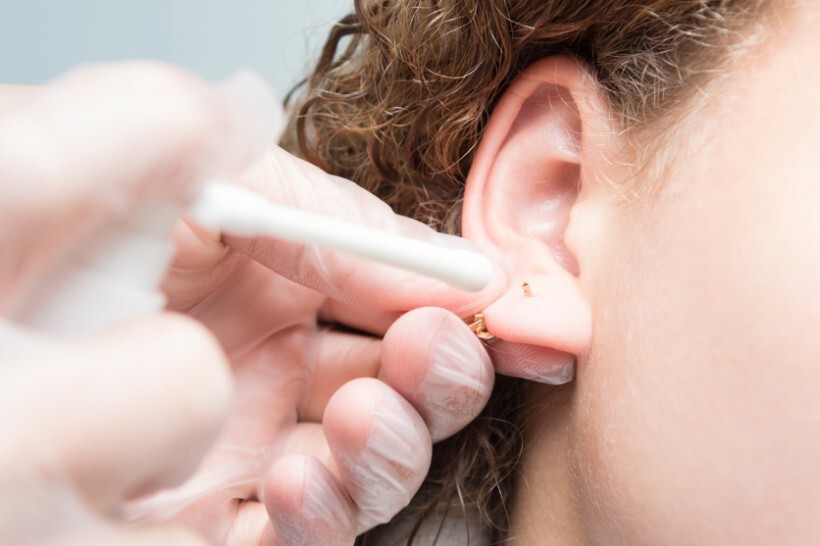
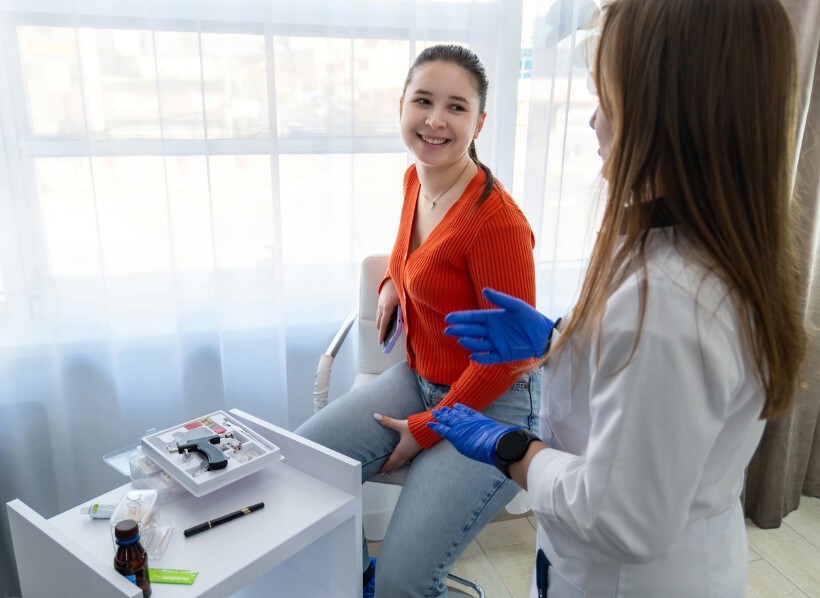
The cost for a basic earlobe piercing starts at around $28 and can go up to $82 per lobe. Some studios offer discounts for pairs, typically ranging from $55 to $150 for both ears. More complex piercings like conch and tragus range from $62 to $115 and $62 to $105, respectively. Industrial piercings, involving two holes connected by a barbell, cost between $72 and $110, reflecting the greater skill required. The daith piercing costs $65 to $125, while helix and forward helix piercings range from $42 to $105. Remember that these prices are averages, and actual costs may vary.
2. What Types of Ear Piercings Are Available and How Much Do They Cost?
The cost of getting ears pierced is directly related to the complexity of the procedure. Here’s a breakdown of the most popular options:
2.1. Earlobe Piercing (Single or Pair)
This is the most common and simplest type of ear piercing, usually done on the soft tissue of the earlobe. It’s ideal for studs, rings, or small hoops. A single earlobe piercing ranges from $28 to $82, while a pair typically costs between $55 and $150. The wide range in cost can depend on the studio’s location, the piercer’s experience, and the quality of the initial jewelry.
2.2. Cartilage Piercing
This piercing is performed on the upper cartilage of the ear, typically along the outer rim. Due to the tougher tissue, this piercing requires more skill than a lobe piercing, with costs ranging from $40 to $95. The increased cost reflects the expertise needed to avoid complications and ensure proper healing. According to a study published in the Journal of Cutaneous and Aesthetic Surgery, cartilage piercings have a higher risk of infection compared to earlobe piercings due to reduced blood flow to the area.
2.3. Helix Piercing
Helix piercings are added along the helix, the upper outer edge of the ear. The helix ear piercing cost ranges from $42 to $92. The placement and angle of the piercing require precision, contributing to the slightly higher cost compared to earlobe piercings.
2.4. Forward Helix Piercing
This is a type of helix piercing done on the front edge of the ear. Being closer to the face, forward helix piercings are slightly more delicate and typically cost between $50 and $105. The proximity to the face requires extra care and precision to avoid discomfort and ensure aesthetic appeal.
2.5. Conch Piercing
This piercing is done in the middle part of the ear’s cartilage, resembling the shape of a conch shell. You can expect to pay between $62 and $115 for a conch piercing. The larger surface area and curvature of the conch require a skilled piercer to ensure proper placement and healing.
2.6. Industrial Piercing
The industrial piercing is unique: two separate piercings are connected by a single straight barbell, giving it a bold, “industrial” look. The cost to get an industrial piercing usually falls between $65 and $125. The complexity of aligning two piercings and ensuring they both heal properly contributes to the higher cost.
2.7. Daith Piercing
Many consider Daith piercings a bold look because they involve piercing the inner cartilage fold across the upper ear. This placement is believed by some to impact pressure points and treat migraines; however, there’s no medical proof of this. It costs $72 to $110 to perform. Due to its location, the daith piercing can be more challenging to execute and requires an experienced piercer.
2.8. Orbital Piercing
Like industrial piercings, orbitals use two piercings. This piercing is called ‘orbital’ because the two holes are linked by a single ring, making it appear as though the jewelry is orbiting the ear. Getting an orbital piercing ranges from $45 to $95. The cost reflects the need for precise placement to ensure the ring sits comfortably and heals correctly.
2.9. Rook Piercing
A rook piercing is vertical and runs through the fold of the cartilage in the upper inner ear, called the “rook.” This ear piercing service costs $62 to $112. The rook is a small and curved area, making this piercing more technically challenging and increasing its cost.
2.10. Snug Piercing
This is considered one of the more painful ear piercings because it’s done horizontally through the inner cartilage. Its name stems from its tight placement and “snug” fit. It’ll usually set you back $68 to $120. The density of the cartilage and the specific placement contribute to the higher cost.
2.11. Tragus Piercing
The tragus is the small, rounded piece of cartilage that sits just outside the ear canal. This piercing is done on that part of the ear. A tragus piercing will fall between $62 and $105. The proximity to the ear canal and the thickness of the cartilage require a skilled piercer to ensure safety and proper healing.
3. What Factors Affect the Cost of Ear Piercing?
Several factors influence the cost of ear piercing, so it’s essential to understand these to budget accordingly.
3.1. Piercing Technique
The method used for piercing plays a big role in ear piercing prices. Piercing guns are often cheaper since they’re commonly used at mall kiosks and require basic training. However, they’re less precise and can’t be fully sterilized, leading to an increased risk of infection.
Piercing needles are more expensive but are considered the safest and most professional choice. They offer a cleaner puncture, reducing tissue damage and potential complications. A study in the Journal of the American Academy of Dermatology found that piercing needles cause less trauma to the skin compared to piercing guns, resulting in fewer complications. The higher cost is mainly due to the need for a trained piercer and strict hygiene standards.
3.2. Piercer’s Experience
The skill level of your piercer also impacts the average price for ear piercing. A highly trained professional, often found in tattoo or piercing studios, typically charges more due to their expertise. Their experience means a safer procedure and personalized advice on placement and aftercare.
It’s worth researching to find a well-reviewed piercer who performs piercings. You might pay more, but the quality of work and lower risk of complications are guaranteed. Many piercers are trained in body modifications beyond the ear, like facial or belly piercings.
3.3. Extra or Upgraded Jewelry
The cost of jewelry significantly impacts the overall ear piercing cost. Here’s a breakdown of estimated prices:
| Extra Jewelry | Estimated Prices |
|---|---|
| Basic surgical steel jewelry | $15 to $35 |
| Titanium jewelry | $45 to $80 |
| Gold jewelry (14k or higher) | $75 to $160 |
| Platinum jewelry | $120 to $300 |
| Custom or designer jewelry (with gems or precious stones) | $100 to $350+ |
Basic jewelry, like surgical steel studs, is usually included in the base cost. However, upgrading to titanium, gold, or platinum can increase the price from $45 to $300. Titanium and gold are popular upgrades, especially for those with metal allergies or sensitive skin. Custom or designer pieces can add an extra luxurious touch but can also increase the final cost, sometimes up to $350 or more.
3.4. Aftercare Products
Remember to factor in aftercare products in your budget. They’re essential for preventing infections and complications. Sterile saline sprays usually cost between $5 and $15, and antimicrobial cleaning solutions range from $10 to $20. Some studios offer complete aftercare kits with saline solution, wipes, and other accessories for $15 to $30. Piercing ointments or balms might also be recommended to soothe the area and keep the area moisturized, costing around $8 to $20.
3.5. Jewelry Shop vs Piercing/Tattoo Studio
The type of establishment where you decide to get your piercing also impacts the cost and quality of the service. Jewelry shops or mall kiosks often use piercing guns and offer basic earrings. These places are usually cheaper but might not adhere to the same strict hygiene standards or expertise as professional studios. Piercing or tattoo studios specialize in body modification and use sterilized needles for a safer experience. These studios typically charge more because they employ trained professionals and maintain strict cleanliness standards.
If you’re wondering how much ear piercing costs at a tattoo shop, expect to pay more than in a jewelry shop. This is because they can provide a broader range of piercing types and premium jewelry options. While mall kiosks are suitable for simple lobe piercings, tattoo studios are better for complex options like cartilage or industrial piercings.
3.6. Piercing Studio Location and Popularity
The location and popularity of ear piercing places can greatly affect how much you pay. Here’s a comparison of average costs at different studios:
| Popular Piercing Studios/Tattoo Shops | Average Costs of Ear Piercing |
|---|---|
| Studs | $40 to $90 |
| Maria Tash | $20 to $100+ |
| Infinite Body Piercing | $50 to $130 |
| Piercing Pagoda | $35 to $70 |
| Shaman Modifications | $60 to $130+ |
Studios in upscale areas or trendy neighborhoods often charge more due to higher overhead costs and increased demand. Well-known studios with celebrity clients or a strong online presence may also set premium rates simply because of their name and reputation. Researching local studios can help you find an affordable yet reputable place for your piercing.
4. How Do You Choose a Reputable Piercing Studio?
Choosing the right piercing studio is crucial for your safety and directly impacts how much ear piercing will cost. Unlike other services, a piercing involves breaking the skin, so maintaining strict hygiene standards and professional expertise is essential. Here’s a step-by-step guide to help you decide:
4.1. Look for Cleanliness and Hygiene Standards
The studio should be spotless, with visible sanitation practices like disposable gloves, sterilized tools, and clean surfaces. Make sure the studio looks and smells clean, and the piercer washes their hands and changes gloves between clients. According to the Association of Professional Piercers (APP), a reputable studio should have an autoclave for sterilizing equipment and follow strict sanitation protocols.
4.2. Check the Piercer’s Experience and Qualifications
An experienced piercer should have proper training and a solid understanding of anatomy. They should have certifications from professional organizations like the APP. Don’t hesitate to ask about their background and qualifications. A piercer with extensive experience is more likely to perform the procedure safely and provide valuable aftercare advice.
4.3. Read Customer Reviews and Testimonials
Search for reviews on Google, Yelp, or social media before visiting. Consistent positive feedback about cleanliness, professionalism, and the piercer’s skills is a strong indicator of a reputable studio. Pay attention to how complications (if any) were handled and if clients were satisfied with aftercare support.
4.4. Verify Licensing and Compliance
A reputable piercing studio should be licensed by local health authorities to ensure it complies with safety regulations. Look for a business license and health department certification prominently displayed. Any legitimate studio will gladly answer questions about their licensing and safety protocols.
4.5. Ask About Jewelry Quality
The studio should offer hypoallergenic jewelry made from materials like titanium, surgical steel, or 14k gold for new piercings. Cheap jewelry can cause skin irritation or allergic reactions, so high-quality materials are essential. Avoid studios offering low-grade metals like nickel. The Nickel Institute provides resources on identifying and avoiding nickel allergies.
4.6. Avoid DIY or Unprofessional Piercing Methods
Never attempt a DIY piercing or go to untrained individuals offering “DIY” services outside a professional studio. Piercing requires skill, sterile tools, and a proper understanding of anatomy. Investing in a professional studio ensures your piercing is done safely and correctly.
5. What Should You Know About Ear Piercing Aftercare?
Proper aftercare is critical to avoid complications and additional medical costs. Here are some essential aftercare tips:
-
Clean your piercing twice daily: Use a sterile saline solution to reduce bacteria and promote healing.
-
Avoid touching or twisting the jewelry: Unwashed hands introduce germs, leading to infection and irritation.
-
Be cautious of water exposure: Avoid swimming in pools, lakes, or hot tubs until fully healed, as bacteria in water can cause infections.
-
Watch for signs of infection: Redness, swelling, or unusual discharge can indicate infection. Consult your piercer or a healthcare provider if you notice any of these symptoms.
-
Follow jewelry change timelines: Wait until your piercing is fully healed before changing your jewelry to avoid irritation or complications.
-
Use high-quality aftercare products: Invest in sterile saline sprays or antimicrobial solutions to keep your piercing clean without causing irritation.
According to the American Academy of Dermatology, proper aftercare can significantly reduce the risk of infection and promote faster healing.
6. What Are Common Complications Associated with Ear Piercings?
While ear piercings are generally safe, potential complications can arise if proper precautions aren’t taken. Here are some common issues to be aware of:
-
Infection: Bacteria can enter the piercing site, leading to redness, swelling, pain, and discharge.
-
Allergic Reactions: Sensitivity to certain metals in jewelry can cause itching, redness, and skin irritation.
-
Keloids: These raised scars can form around the piercing site, particularly in individuals prone to keloid scarring.
-
Tears and Trauma: Accidental pulling or trauma to the piercing can cause tearing and damage to the surrounding tissue.
-
Embedded Jewelry: In rare cases, jewelry can become embedded in the skin if it’s too tight or if the piercing is not properly cared for.
If you experience any of these complications, consult a healthcare professional or your piercer for appropriate treatment.
7. Are There Any Medical Benefits Associated with Certain Ear Piercings?
Some people believe that certain ear piercings, such as the daith piercing, can help alleviate migraines and anxiety. The theory is that these piercings stimulate acupuncture points in the ear, providing therapeutic effects. However, scientific evidence supporting these claims is limited, and further research is needed. The American Migraine Foundation notes that while some individuals report relief from migraines after getting a daith piercing, this may be due to a placebo effect.
8. How Does the Cost of Ear Piercing Compare to Other Body Modifications?
The cost of ear piercing is generally lower compared to other body modifications, such as tattoos or more complex piercings. Tattoos, depending on their size and complexity, can range from $50 to several thousand dollars. Other body piercings, like nipple or genital piercings, may also be more expensive due to their sensitive locations and the expertise required. Ear piercings are often seen as an accessible and affordable way to express individuality.
9. Can Insurance Cover the Cost of Ear Piercing?
In most cases, insurance does not cover the cost of ear piercings, as they are considered cosmetic procedures. However, if a piercing is medically necessary, such as to correct a congenital deformity, it may be covered by insurance. It’s best to check with your insurance provider to understand your specific coverage.
10. What are the Latest Trends in Ear Piercing and Jewelry?
Ear piercing trends are constantly evolving, with new placements and jewelry styles emerging regularly. Some current trends include:
-
Constellation Piercings: A cluster of small piercings that mimic the look of a constellation.
-
Stacked Lobe Piercings: Multiple piercings in the earlobe, often adorned with delicate studs or hoops.
-
Industrial Piercings with Unique Jewelry: Using curved or decorative barbells to create a personalized industrial piercing look.
-
Rook and Snug Piercings: These inner ear cartilage piercings are gaining popularity for their unique placement and stylish appeal.
As for jewelry trends, minimalist designs, delicate gemstones, and personalized charms are all popular choices.
Navigating the world of ear piercings can be overwhelming, but understanding the costs, types, and aftercare involved can empower you to make informed decisions. At HOW.EDU.VN, we connect you with trusted experts who can provide personalized advice and guidance for all your ear-piercing needs.
Ready to Get Your Ears Pierced? Let the Experts at HOW.EDU.VN Guide You!
Feeling overwhelmed by the options and costs involved in ear piercing? Don’t worry, HOW.EDU.VN is here to help. We understand the challenges of finding reliable information and skilled professionals for such a personal decision.
Are you facing these challenges?
- Difficulty finding a reputable piercer with the right experience?
- Concerned about the hygiene standards and safety protocols of different studios?
- Confused about the different types of piercings and their associated costs?
- Unsure about the best aftercare practices to prevent infections and complications?
HOW.EDU.VN offers the perfect solution!
We connect you directly with leading experts and professionals who can provide personalized guidance and support for your ear-piercing journey. Our team of experienced piercers, dermatologists, and body modification specialists is dedicated to ensuring your safety, satisfaction, and peace of mind.
Here’s how HOW.EDU.VN can help you:
- Personalized Consultations: Get one-on-one advice from experienced professionals who can assess your individual needs and preferences.
- Expert Recommendations: Receive tailored recommendations for reputable piercing studios and skilled piercers in your area.
- Cost Transparency: Gain a clear understanding of the costs associated with different types of piercings, jewelry options, and aftercare products.
- Comprehensive Aftercare Support: Access expert guidance on proper aftercare practices to minimize the risk of infections and promote faster healing.
Don’t let the complexities of ear piercing hold you back from expressing your unique style. Trust the experts at HOW.EDU.VN to guide you every step of the way.
Contact us today for a personalized consultation!
Address: 456 Expertise Plaza, Consult City, CA 90210, United States
WhatsApp: +1 (310) 555-1212
Website: HOW.EDU.VN
Let HOW.EDU.VN help you achieve the perfect ear piercing experience!
FAQ: Your Ear Piercing Questions Answered by HOW.EDU.VN Experts
Here are some frequently asked questions about ear piercings, answered by the experts at HOW.EDU.VN:
1. How much does a basic earlobe piercing cost?
A basic earlobe piercing typically ranges from $28 to $82 per lobe, depending on the studio and location.
2. Are cartilage piercings more expensive than earlobe piercings?
Yes, cartilage piercings are generally more expensive, ranging from $40 to $95, due to the increased skill and precision required.
3. What is the safest method for ear piercing?
Piercing needles are considered the safest method as they provide a cleaner puncture and reduce tissue damage compared to piercing guns.
4. How can I find a reputable piercing studio?
Look for cleanliness, experienced piercers, positive customer reviews, and proper licensing and compliance.
5. What materials are best for new ear piercing jewelry?
Hypoallergenic materials like titanium, surgical steel, or 14k gold are recommended for new piercings to avoid allergic reactions.
6. How often should I clean my new ear piercing?
Clean your new piercing twice daily with a sterile saline solution to reduce bacteria and promote healing.
7. What are the signs of an infected ear piercing?
Signs of infection include redness, swelling, pain, and unusual discharge. Consult a healthcare professional if you experience these symptoms.
8. How long does it take for an ear piercing to heal?
Earlobe piercings typically heal in 6-8 weeks, while cartilage piercings can take several months to a year to fully heal.
9. Can I swim with a new ear piercing?
Avoid swimming in pools, lakes, or hot tubs until your piercing is fully healed to prevent infections.
10. When can I change my ear piercing jewelry?
Wait until your piercing is fully healed before changing your jewelry to avoid irritation or complications.
For more expert advice and personalized guidance on ear piercings, contact how.edu.vn today!
